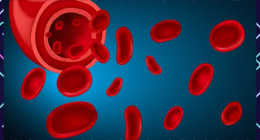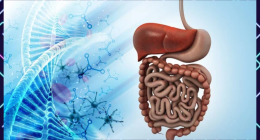Dr Atul Patel shares 5 HIV Myths Proven False by facts and prevention options.
World AIDS Day 2022: Over the past ten years, medical advancements have transformed HIV into a chronic, treatable condition. Modern antiretrovirals (anti-HIV drugs) are well tolerated, have fewer adverse effects, and are incredibly successful at controlling HIV. As a result, the patient’s life expectancy has increased to an almost average level. Antiretroviral-treated patients with good control diseases have regular, good quality lives. Additionally, these people don’t frequently get opportunistic infections. In addition to these survival benefits, controlling HIV with antiretrovirals also has the critical advantage of preventing HIV transmission from infected to uninfected people via any route. Many international organisations, such as WHO, UNAIDS, NIH, etc., join in this famous slogan. U = U, meaning that undetectable are untransmissible. Patients with undetectable viral loads cannot transmit the virus to their partners through sex.
Long-acting injectable antiretrovirals are another scientific advancement currently being researched and may make life easier for HIV patients. For the treatment of HIV, ongoing studies using these injectable antiretrovirals are examined every two, three, four, and six monthly doses. Consider how convenient it would be to treat HIV with a single shot every six months. Patients only need to remember one shot every six months; they do not need to remember to take daily medicines. Pre-exposure prophylaxis and post-exposure prophylaxis have made similar advancements in recent years. These tactics help lower the rate of new ailments in patients who are at high risk. Despite all the HIV/AIDS-related information available nowadays, many widespread misconceptions exist. It is crucial to set the record straight and respond to concerns one may be reluctant to tell.
Also read | You Can Actually Die of a Broken Heart – Yes!
Dr Atul Patel, HOD – Infectious Diseases, Sterling Hospitals, shares 5 most ubiquitous myths about HIV/AIDS that have been proven false by facts and prevention options
- The widely held opinion that ” Human Immunodeficiency Virus (HIV) doesn’t cause AIDS” is a myth. The evidence contradicts this interpretation. HIV triggers AIDS, but not all HIV-positive people get AIDS. AIDS is an immune system deficiency syndrome caused by HIV over time. It is associated with weakened immune responses and opportunistic infections. You have HIV if you have AIDS; you cannot get AIDS if you do not have HIV. This has been proven scientifically. Current therapies can keep HIV levels low, maintain a healthy immune system and prevent opportunistic infections and AIDS.
- The following myth is “With all of today’s treatments, HIV is of little concern”. Although there are significant medical advances to treat HIV, the virus can still cause opportunistic infective complications and death. These are frequently observed in HIV patients who have received a late diagnosis and in individuals who consistently skip doses of their medication. One of the main reasons why drug resistance develops and treatments fail is patient non-compliance with the prescribed course of action.
- Another stereotype is, “You can tell if an individual has HIV/AIDS by their appearance”. However, if a person contracts HIV, the symptoms are generally undetectable. A person infected with HIV may exhibit symptoms similar to those associated with other infections, such as fever, fatigue, and general malaise. In addition, the duration of the initial mild symptoms is typically a few weeks. Therefore, only laboratory tests can identify whether someone has HIV.
- “Casual contact causes HIV”. Pools, tears, sweat, and mosquito bites are believed to lead to HIV. However, the truth is entirely different. Only infected blood, vaginal fluids, sperm, and breast milk can transmit HIV. HIV is most commonly transmitted through unprotected sexual contact and drug equipment sharing with an HIV-positive individual. HIV transmission is also possible during pregnancy, childbirth, and breastfeeding.
- It is widely accepted that “HIV-positive individuals cannot safely bear kids”. This myth must be falsified because it is misleading. There are numerous ways to prevent HIV transmission to your partner and unborn child. HIV treatment advances have significantly reduced the likelihood of a mother transmitting the virus to her child. HIV-positive pregnant women who accede to life-saving HIV treatment during pregnancy and breastfeeding can give birth to HIV-free children.
HIV-related misconceptions are highly detrimental. They can cause you to fear something relatively benign. Therefore, it is essential to learn the truth and acquire accurate information. Even though there is no cure, people with AIDS can live productively if diagnosed and treated promptly. Home









